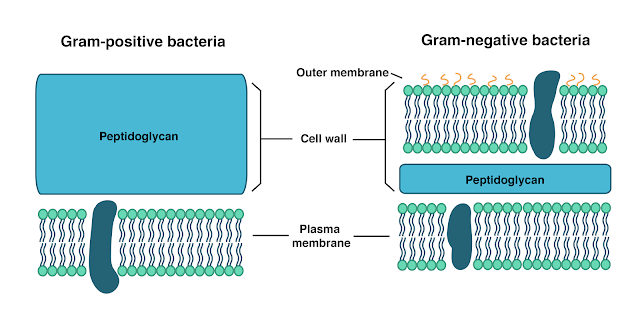INTRODUCTION: The tasks of the complex bacterial cell wall are to protect the protoplasts from external environment, to withstand and maintain the osmotic pressure gradient between the cell interior and the extracellular environment keeping internal pressures as high as 500–2000kPa, to give the cell its outer form and to facilitate communication with its surroundings.
MUREIN, ALSO KNOWN AS PEPTIDOGLYCAN: The most important structural element of the wall is murein, a netlike polymer material surrounding the entire cell. It is made up of polysaccharide chains crosslinked by peptides.
THE CELL WALL OF GRAM-POSITIVE BACTERIA: The murein sacculus may consist of as many as 40 layers or 15–80 nm thick and account for as much as 30% of the dry mass of the cell wall. The membrane lipoteichoic acids are anchored in the cytoplasmic membrane, whereas the cell wall teichoic acids are covalently coupled to the murein. The physiological role of the teichoic acids is not known in detail; possibly they regulate the activity of the autolysins that steer growth and transverse fission processes in the cell.
THE CELL WALL OF GRAM-NEGATIVE BACTERIA: Here, the murein is only about 2nm thick and contributes up to 10% of the dry cell wall mass. The outer membrane is the salient structural element. It contains numerous proteins (50% by mass) as well as the medically critical lipopolysaccharide. Outer membrane-associated proteins (Omps) constitute specific structures that enable bacteria to attach to host cell receptors. A number of Omps are transport proteins. This molecular complex, also known as endotoxin, is comprised of the lipoid A, the core polysaccharide, and the O-specific polysaccharide chain.
RELATED;
1. BACTERIOLOGY
2. WATCH A VIDEO DEMONSTRATION OF THE BACTERIAL CELL MEMBRANES











No comments:
Post a Comment